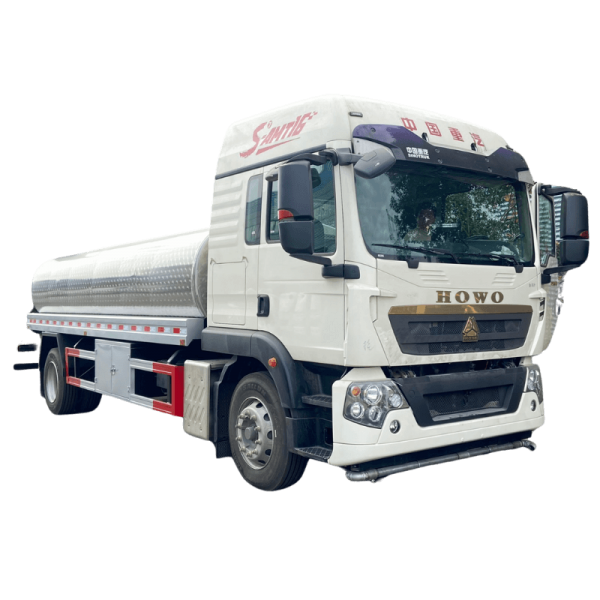Introduction
Garbage compactor trucks play a crucial role in waste management systems by collecting and compacting solid waste efficiently. These specialized vehicles are essential for maintaining cleanliness in urban areas and ensuring proper disposal of garbage. However, like any other mechanical equipment, garbage compactor trucks can encounter issues that may affect their performance. In this article, we will provide a comprehensive troubleshooting guide for garbage compactor trucks, covering common problems and solutions to help operators and maintenance personnel effectively address issues and ensure the smooth operation of these vital vehicles.
1. Understanding Garbage Compactor Trucks
Before delving into troubleshooting techniques, it is essential to have a basic understanding of how garbage compactor trucks work. These vehicles typically consist of a chassis equipped with a compactor body, hydraulic system, and collection mechanism. The compactor body serves as a container for collecting solid waste, which is compacted using a hydraulic system to maximize the truck's carrying capacity. The collection mechanism, such as a rear loader or side loader, allows the truck to pick up garbage bins or containers for emptying into the compactor body.
2. Common Problems and Troubleshooting Techniques
2.1 Hydraulic System Malfunctions
One of the most common issues with garbage compactor trucks involves hydraulic system malfunctions. Symptoms of hydraulic problems may include slow or erratic operation of the compactor, leaks, or unusual noises. To troubleshoot hydraulic system issues, follow these steps:
- Check hydraulic fluid levels: Ensure that the hydraulic fluid reservoir is adequately filled to the recommended level. Low fluid levels can lead to poor system performance.

- Inspect for leaks: Conduct a visual inspection of hydraulic hoses, fittings, and connections for any signs of leakage. Replace damaged components as necessary.
- Check hydraulic pump and valves: Test the hydraulic pump and control valves for proper operation. Listen for abnormal noises and observe the system's response to commands.
- Bleed air from the system: Air trapped in the hydraulic system can cause inefficiencies and malfunctions. Follow the manufacturer's instructions to bleed air from the system.
2.2 Compactor Body Jamming
Another common issue faced by garbage compactor trucks is the compactor body jamming during operation. This can occur due to overloading, foreign objects obstructing the compaction mechanism, or mechanical failures. To troubleshoot compactor body jamming, consider the following steps:
- Clear obstructions: Inspect the compactor body for any foreign objects or debris that may be causing the jam. Remove the obstruction carefully to prevent damage to the compactor.
- Adjust compaction settings: If the compactor is consistently jamming, consider adjusting the compaction settings to a lower level. Avoid overloading the compactor beyond its capacity.
- Check mechanical components: Inspect the compaction mechanism, including the ram, guides, and seals, for signs of wear or damage. get redirected here worn components to prevent future jams.
2.3 Electrical System Issues
Garbage compactor trucks rely on an electrical system to power various components, such as lights, controls, and safety features. Electrical problems can manifest as issues with lighting, control panel malfunctions, or erratic behavior of the truck's systems. When troubleshooting electrical system issues, consider the following steps:
- Check battery and connections: Ensure that the truck's battery is properly charged and that all connections are secure. Corrosion or loose connections can lead to electrical issues.
- Test fuses and relays: Inspect and test the fuses and relays in the truck's electrical system to identify any faulty components. Replace damaged fuses or relays as needed.
- Inspect wiring harnesses: Examine the wiring harnesses for signs of damage, such as fraying or exposed wires. Repair or replace damaged wiring to restore proper electrical function.
3. Preventive Maintenance Practices
In addition to troubleshooting specific issues, implementing preventive maintenance practices can help reduce the likelihood of breakdowns and prolong the lifespan of garbage compactor trucks. Consider the following maintenance tips to keep your compactor truck in optimal condition:
- Regularly inspect and lubricate moving parts, such as hinges, pivot points, and hydraulic cylinders, to prevent wear and ensure smooth operation.
- Keep the compactor body clean and free of debris to prevent obstructions and reduce the risk of jams during operation.
- Schedule routine maintenance tasks, such as fluid changes, filter replacements, and system inspections, according to the manufacturer's recommendations.
- Train operators and maintenance personnel on proper operating procedures and maintenance practices to ensure safe and effective use of the compactor truck.
Conclusion
Garbage compactor trucks are indispensable assets in waste management systems, but they can encounter various issues that may impact their performance. By understanding common problems and implementing effective troubleshooting techniques, operators and maintenance personnel can address issues promptly and ensure the smooth operation of these vital vehicles. Additionally, prioritizing preventive maintenance practices can help prevent breakdowns and extend the lifespan of garbage compactor trucks, ultimately contributing to efficient waste management and environmental sustainability. By following the guidelines outlined in this article, stakeholders can optimize the reliability and effectiveness of their garbage compactor truck fleet.
